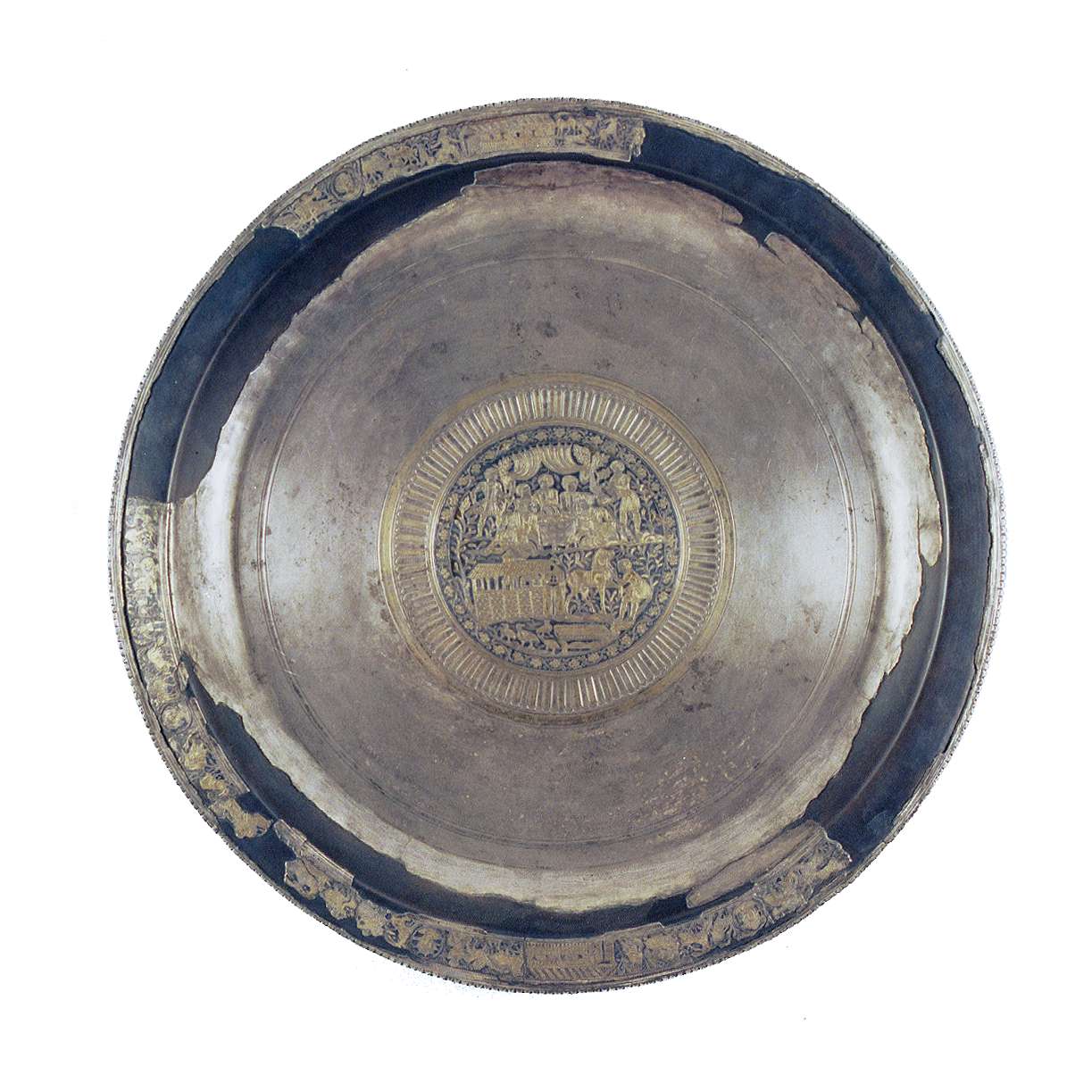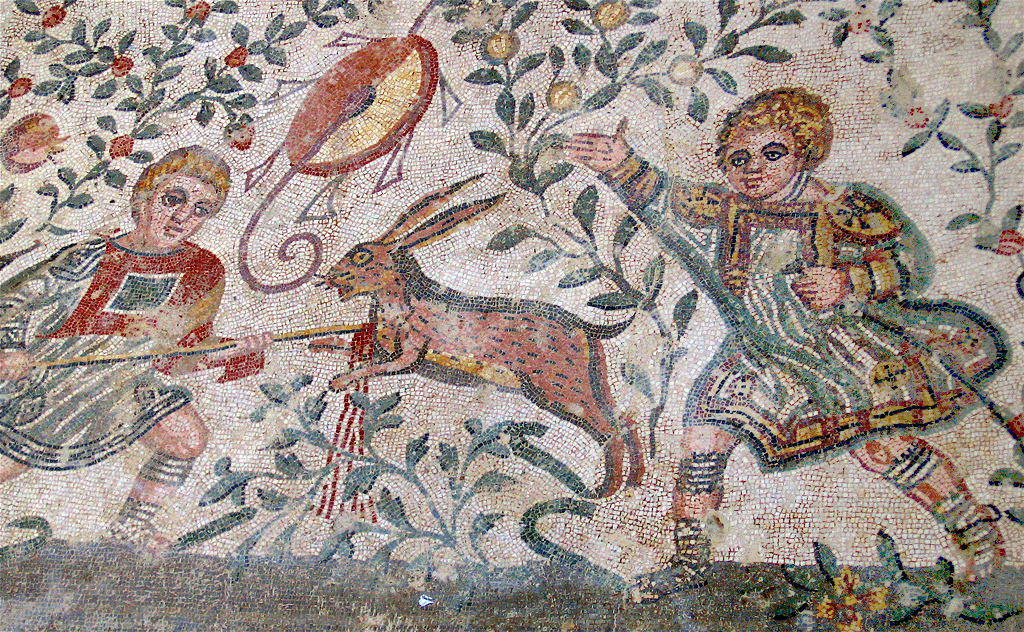Hunting feasts have a long history. Among the Romans, one such by Philostratus Elder uses the rhetorical device of Ekphrasis, a verbal description of a visual representation, to illustrate a painting he observed in Naples. Ironically, none survive, if they existed at all, and except by his descriptions in Imagines, they would be lost.

Cesena Huntin Plate. The central medallion depicts the hunter’s feast. (Later 4th cent.)
Though the word is unknown to Philostratus, * the concept is undoubtedly familiar to him. Set in a forest clearing beside a “gushing spring” and shaded by ivy and twisty vines, five hunters rest still flushed by the excitement of the day. They are feasters served by chefs working over a fire and stirring a boiling pot. Servants ready to pour wine from goatskin pouches.
Philostratus carefully describes the situation as “charming sturdy youths still breathing the excitement of the hunt but now variously engaged, are resting themselves. Ye gods! How wonderful and how charming is the clearness of the painter’s art, and how well we may discern the story of each one! This improvised couch, made of nets, I think receives those whom we may rightly call “the leaders of the hunt. They are five in number. You see the midmost of them, how he has raised himself and has turned towards those who lied above him, to whom, it seems to me, he is relating the story of his contest and how he was first to bring down one of the two wild beasts which are suspended from the trees in nets, a deer apparently and a boar.” (Trans. Arthur Fairbanks)
*Philostratus the Elder aka Philostratus of Lemnos (190c.-230). It’s uncertain that the painting he describes is real or imaginary.
See http://www.theoi.com/Text/PhilostratusYounger.html#3; also Sevso Hunting Plate elsewhere on PicnicWit.com. Featured Image: Detail: Mosaic Villa de Casale Romana, Amerina, Sicily (early 4th century) Recipes of Caelius Apicius. Apicius is the purported author of the most well-known Roman cookbook De Re Coquinaria [ On Cookery or Roman Cookery Book (375c. – 450c.). Trans. Joseph Dommers Vehling (1936). Several men named Apicius have been considered the author. Marcus Gavius wrote On the Luxury of Apicius, but this may be a work of fictional biography of someone other than the cookbook author, whoever he was. The cookbook’s recipes provide the best of Roman cookery among the aristocracy during the eras of Augustus, Tiberius, and Trajan. The first printed copy appeared in 1498 in Milan.
[329] Wild Boar is Prepared Thus
It is cleaned; sprinkled with salt and crushed cumin, and thus left. The next day it is put into the oven; when done, season with crushed pepper.
[332] Make a Hot Sauce for Roast Boar thus
Cush pepper, cumin, celery seed, mint, thyme, satury [savory], saffron, toasted nuts, or toasted almonds, honey, wine, broth, vinegar and a little oil.
[342] Preparation of Venison
Pepper, cumin, condiments, parsley, onion, rue, honey, broth, mint, raisin wine, reduced wine, and a little oil; bind with roux when boiling.
[343] Hot Sauce for Venison
Pepper, lovage, parsley, cumin, toasted nuts or almonds, honey, vinegar, wine, a little oil; add broth and stir well.
[426] Sauce for Catfish, Baby Tunny and Tunny
To Make Them More Tasty Use Pepper, Lovage, Cumin, Onions, Mint, Rue, Sage Date Wine, Honey, Vinegar, Mustard and Oil.

